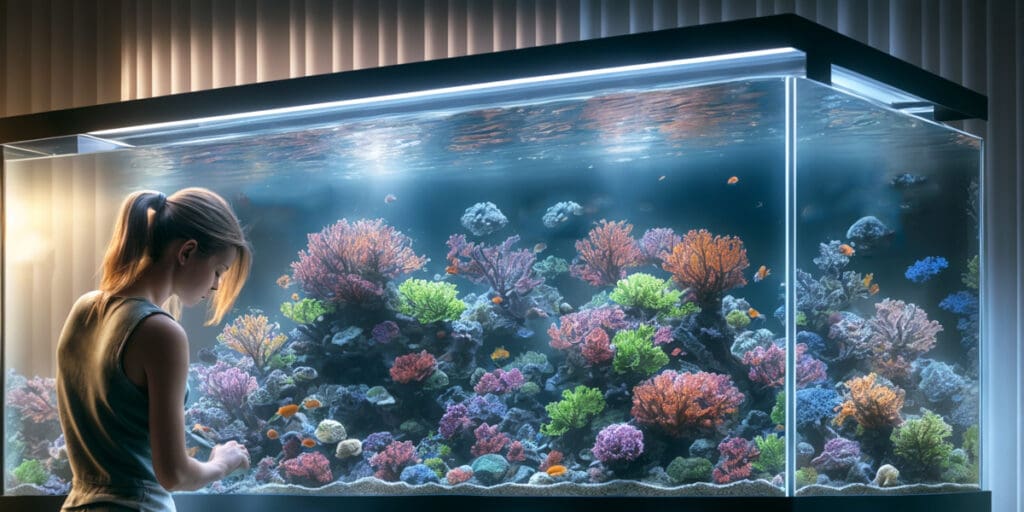Setting up a saltwater aquarium is an exciting venture into marine life, but the key to a successful and thriving aquarium lies in proper cycling. This process, crucial for establishing a balanced ecosystem, involves cultivating beneficial bacteria to convert harmful toxins into safer compounds. This guide will walk you through each step to ensure a healthy start for your marine inhabitants.
1. Understanding the Nitrogen Cycle
Before diving into the cycling process, it’s vital to understand the nitrogen cycle. In a new aquarium, fish waste, uneaten food, and other organic matter produce ammonia, which is toxic to fish. Beneficial bacteria convert ammonia into nitrite and then into nitrate, a less harmful compound. This transformation is the essence of aquarium cycling.
2. Setting Up Your Aquarium

Fresh Aquarium Setup
Start by setting up your tank with all necessary equipment, including a filtration system, heater, and proper lighting. Choose live rock and substrate that not only enhance the aesthetic appeal but also provide surfaces for bacteria to colonize.
3. Initiating the Cycle
To begin cycling, introduce an ammonia source into the tank. This can be done through fish food, adding pure ammonia, or using a commercially available ammonia source designed for aquariums. Monitor ammonia and nitrite levels regularly using a test kit.
4. Monitoring Water Parameters
Regularly test the water for ammonia, nitrites, and nitrates. Initially, you’ll notice an increase in ammonia, followed by nitrite. Over time, both should decrease as beneficial bacteria establish themselves, and nitrates begin to appear.
5. Managing Ammonia and Nitrite Levels
If ammonia or nitrite levels spike, perform partial water changes to reduce their concentration. This step is critical to prevent toxic conditions that can harm marine life.
6. Introducing Marine Life
Once ammonia and nitrite levels consistently read zero, and there’s a presence of nitrates, your tank is cycled. Gradually introduce marine life, starting with hardy species. Avoid overstocking and monitor water parameters closely as the ecosystem adjusts.
7. Ongoing Maintenance

Tank maintenance on a reef
Regular maintenance, including water changes, testing, and monitoring equipment, is crucial to maintain a stable and healthy aquarium environment.
Conclusion
Cycling a saltwater aquarium is a process that requires patience and attention to detail. By following these steps, you’ll create a thriving environment for your marine life, ensuring their health and wellbeing.
